Ep 11: Opening the doors on Weston’s Heritage
In Episode 11 of the podcast, we spoke to two local heritage specialists– Jane Hill and Cara MacMahon about some of Weston’s rich heritage and what you can discover at this year’s Heritage Open Days’ event.
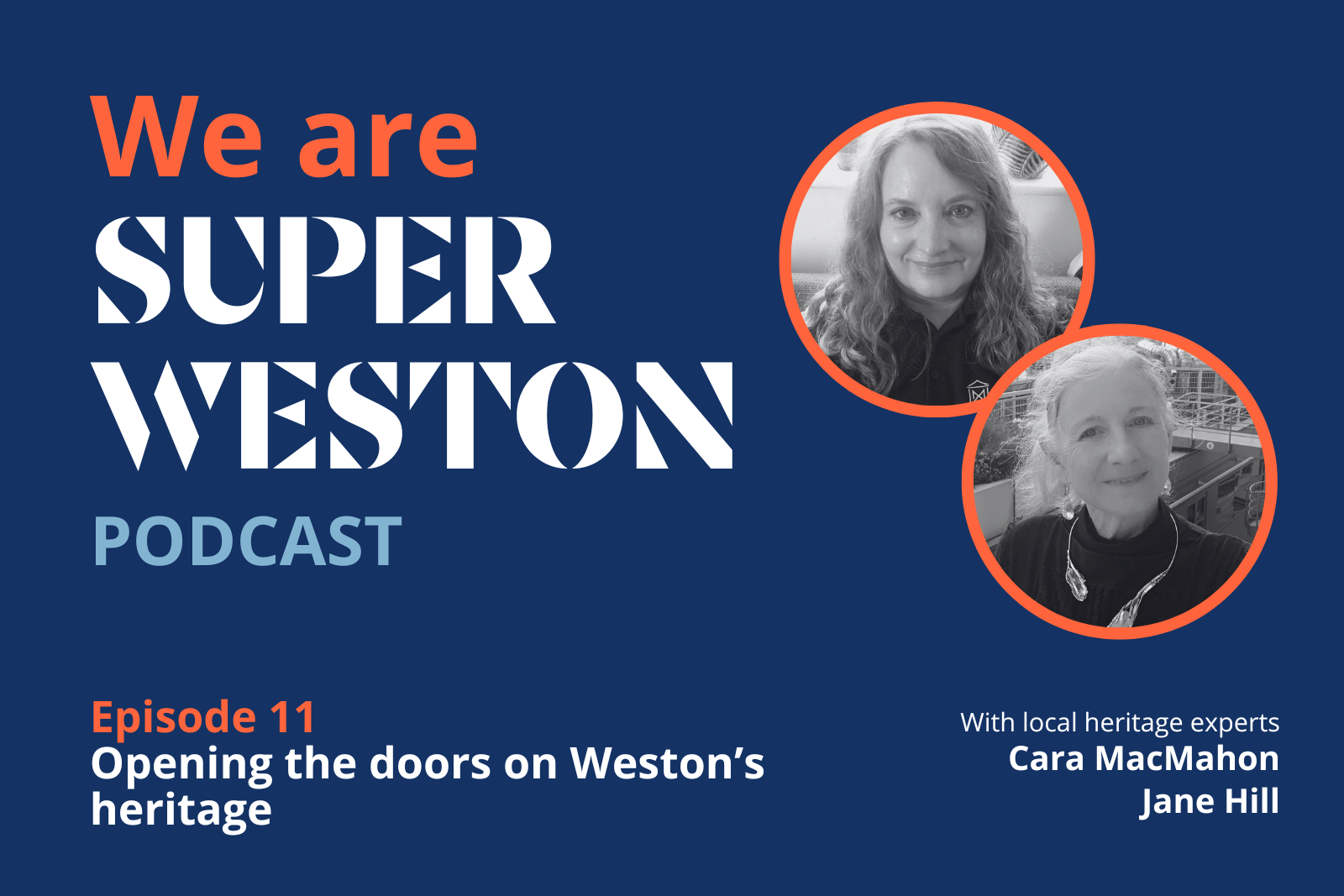
Click below to listen to the episode in full or see below for a summary of the conversation:
Introduction to our podcast guests:
Cara MacMahon is Weston Heritage Action Zone Officer and has been working in Weston for the last six years. Her work centres on restoring historic buildings, retail units, bars, and a programme of engagement work.
Jane Hill works as the Community and Heritage Engagement Officer at Weston Museum, managing the community gallery with the help of their long-standing volunteers, showcasing and co-curating exhibitions three times a year with a range of non-profit community groups, and giving heritage talks. She also does reminiscence alongside volunteers who help her go into memory cafes and care homes as well as lend out memory boxes.
She also runs little exhibitions on their blue boards on a range of different heritage themes, answering general heritage enquiries.
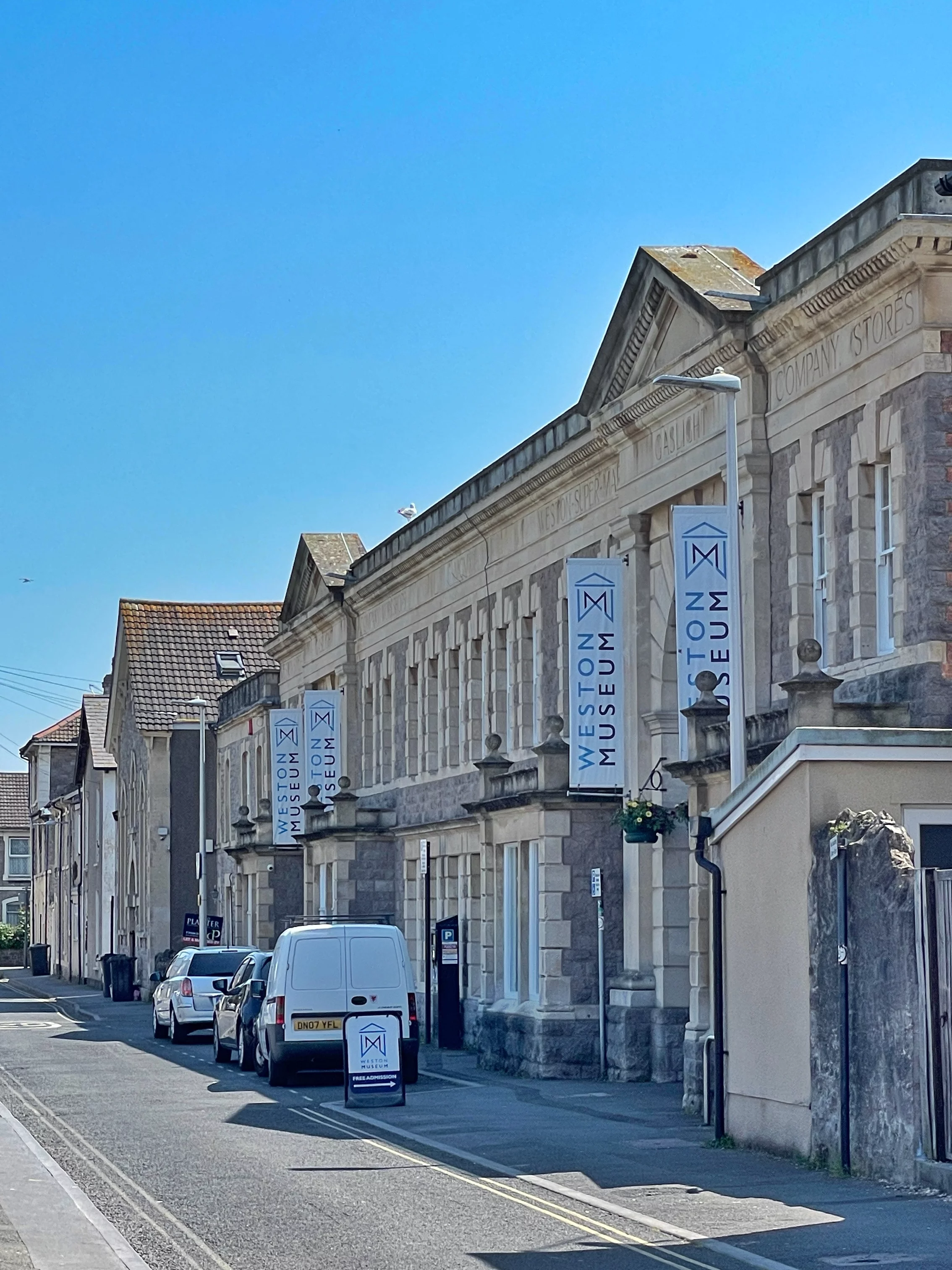
Can you tell us some interesting things that have helped form Weston’s history?
1. Sea bathing took off in the 18th century – people would come to Weston to take the air and have a swim, which was thought to help you with your physical ailments and your mental health – a very good idea both then and now.
2. The first hotel was built in 1810 – The Royal Hotel – when people started to come and stay in the town.
3. Knightstone was bought by Dr Edward Long Fox in 1830, to create a spot for health and wellbeing, where people could come and go to the reading rooms, bathe in the pool, and take the vapours in the steam room.
4. The railway came to Weston in 1841, but it nearly didn’t! The mainline went past Weston because landowners didn’t want a railway going into Weston, but by 1841, it was agreed Weston would have a spur line. In the 10 years from the railway arriving in 1841, the village of Weston went from 2000 people to a town of 4000. It then brought a lot of daytrippers, particularly from Bristol, and people would come and enjoy the seaside on day trips, on bank holidays with factories closing down, on work outings. Now there are daytrippers from further afield, like Birmingham, Wales and Coventry.
Since then, there’s been three different railway stations, including the one Weston has now.
5. From the mid-1850s onwards, the town was really starting to take off, so on the hillside area, all the big grand villas were built for wealthier people. Later into the 19th century, Hans Price, the renowned architect of Weston, was designing all the wonderful public buildings that the town has today, such as the old library, the boulevard, Weston Museum – the former School of Science and Art (part of Weston College), The Sanatorium building, The Royal Sands, a couple of Baptist churches in town and The Mercury building.
The impact of Hans Price on Weston cannot be underestimated. He built about 800 buildings in and around Weston and that ‘look’ of Weston – quite eclectic buildings and architecture – is largely down to him. He also left his mark in terms of Weston politics and getting commissions to build buildings.
6. The development of the Greek community in Weston over the last seven years has had a massive influence, both in investment in restaurants and bars, and the lovely Grand Pier, but also as citizens of Weston supporting the political agenda, of Weston moving forward as a town.
7. There are a huge amount of volunteers who work in Weston’s communal gardens that are now public gardens, and keep them beautiful.
These are things that have helped form Weston, but Historic England’s investment in Weston over the last six years, working to renovate and restore a lot of the town’s buildings, is a legacy mark that is being made at the moment.
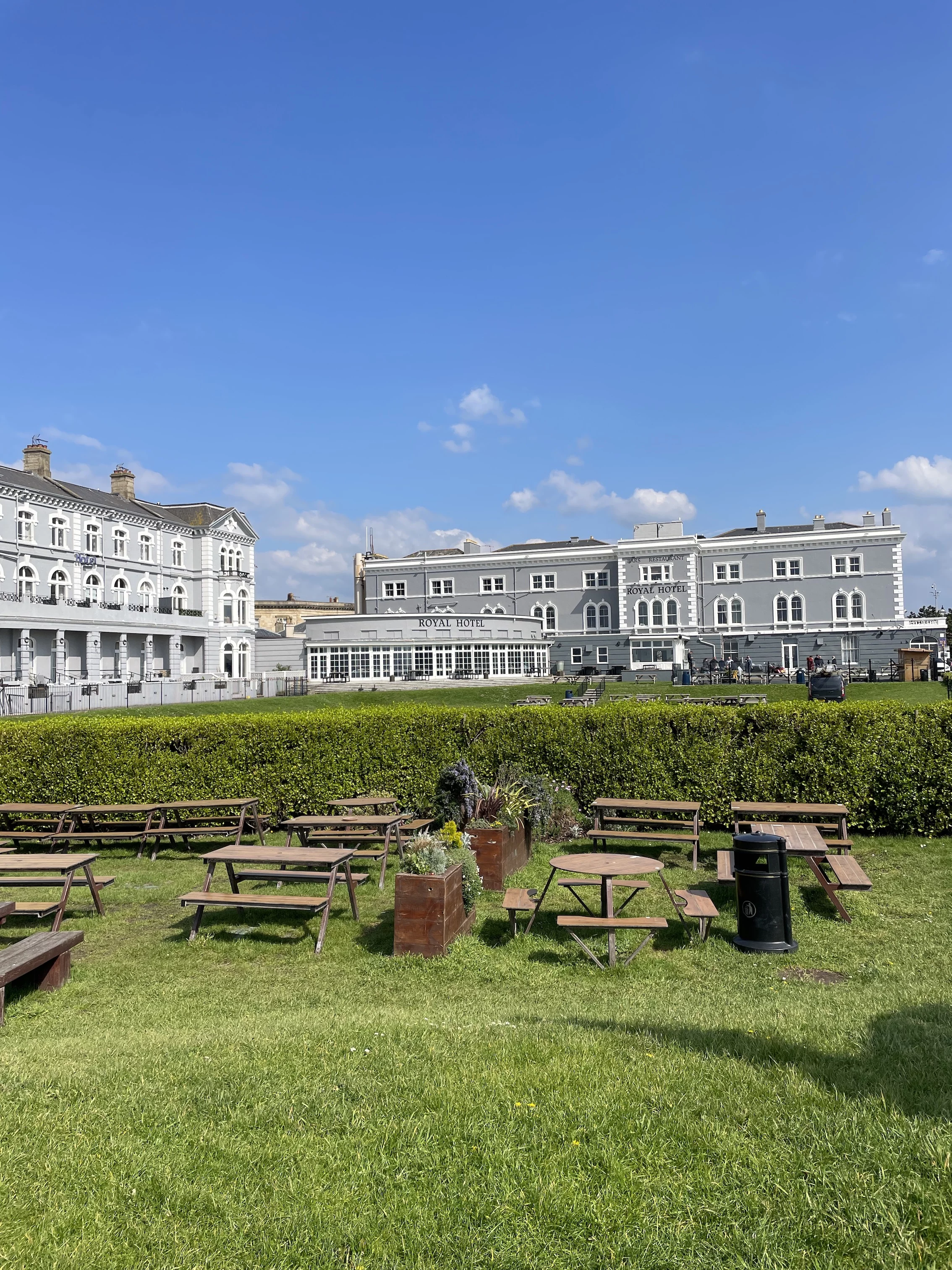
Tell us about the legacy mark and the high street, and what changes people can see in Weston.
Quite a lot has been achieved in Weston over the last six years, some of it you don’t quite see – Weston has been developed as a conservation area, which helps protect and enhance the town. A Shopfront Design Guide has been created, which provides guidance for people on what good design means for their shops and conversion of houses.
£1.5 million of capital work has been achieved in buildings like the Fork ‘n’ Ale pub, which is just opposite the town hall, and the Walker & Ling development of its shopfront. There are also some buildings just by Grove Park – 132 and 134 High street, as well as ‘The Old Kendall’s building’, which some might remember from back in the day – it’s at the corner of Regent Street and High Street – all the mosaics have been restored on that building, as well as the the railings and canopy.
Quite a lot has been achieved with relatively little money and with the support of people, even though they’ve been dealing with the COVID pandemic and have not been quite sure of their future.
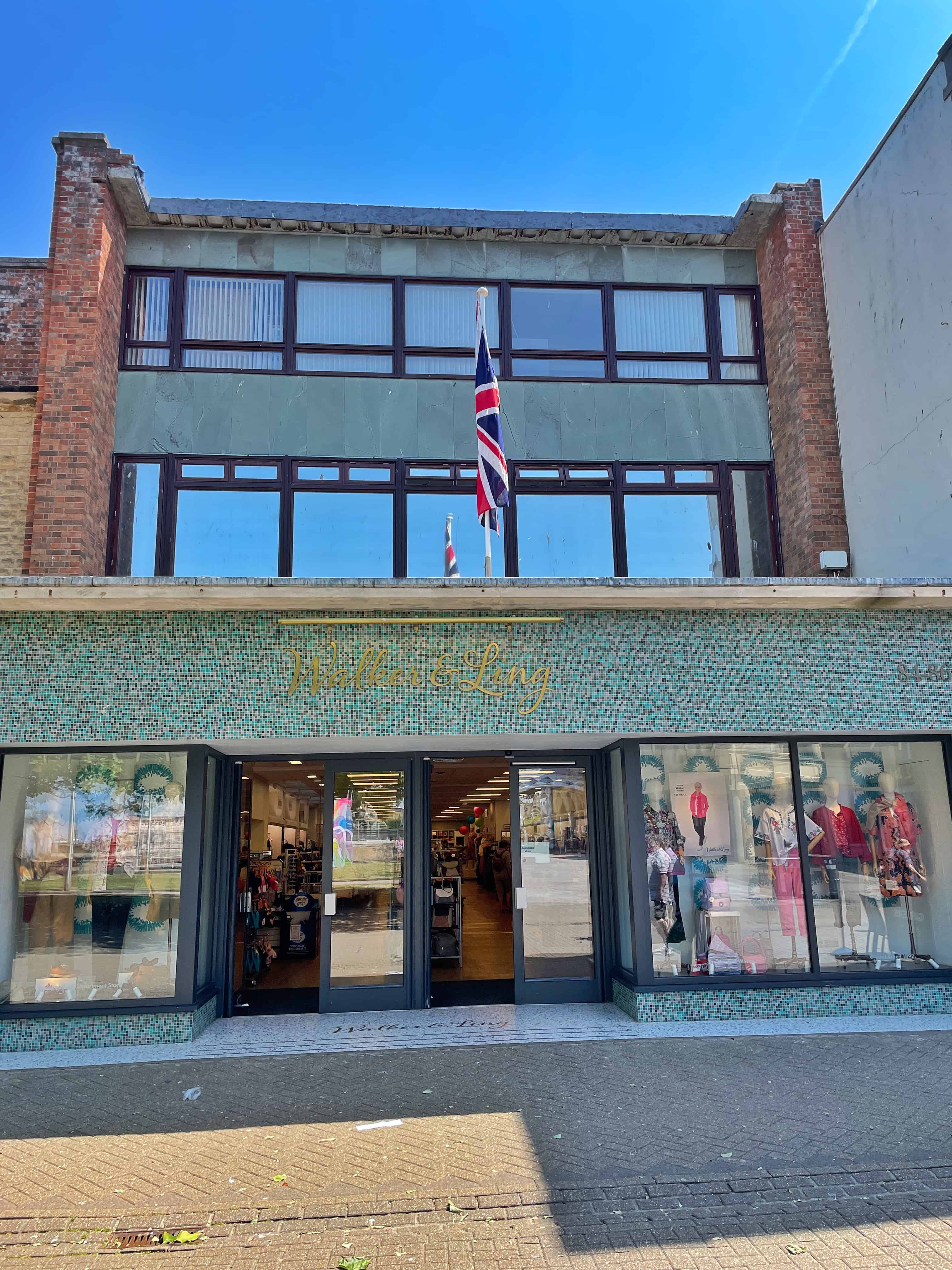
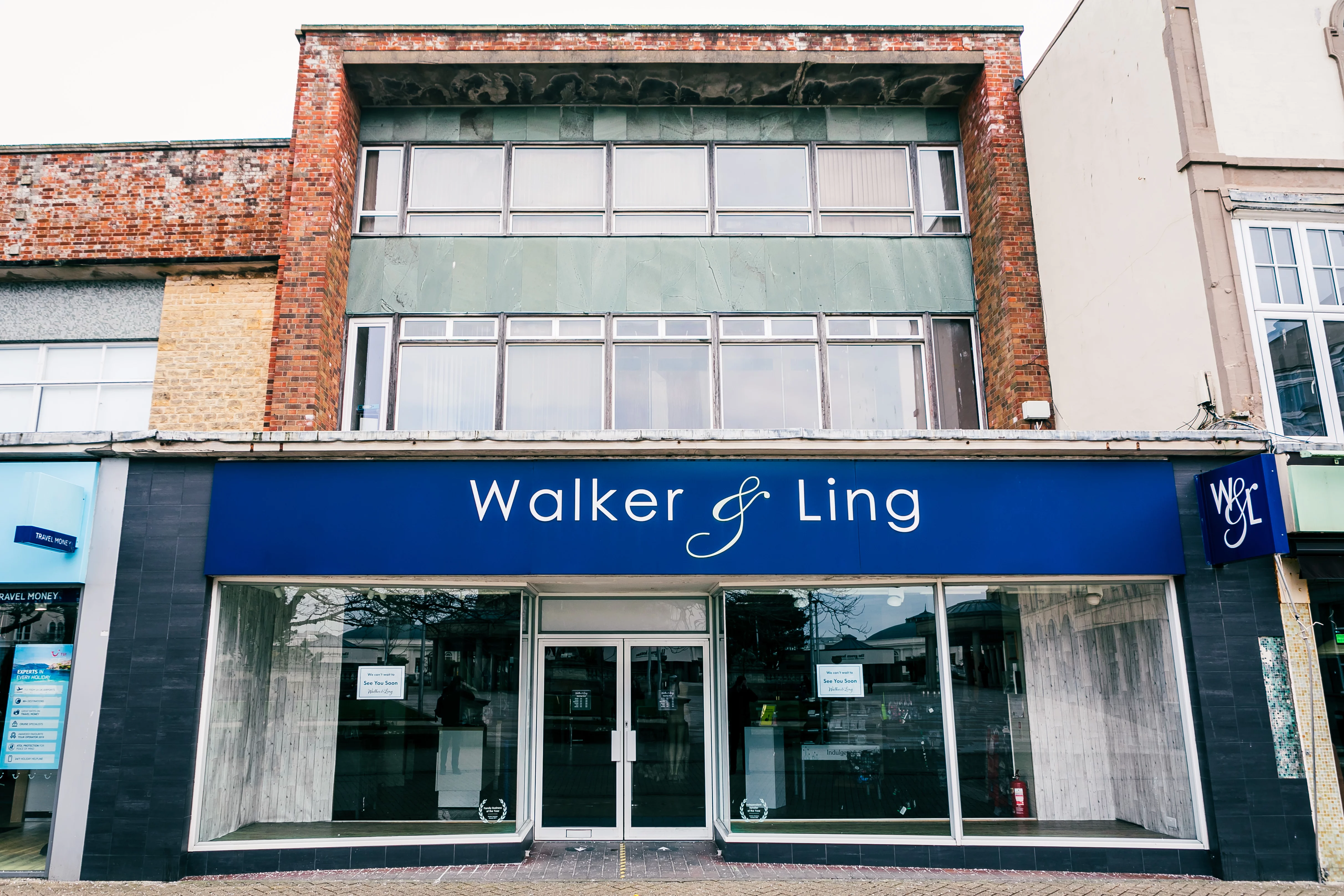
When we think of Bristol, we think of Brunel. Do you think that the Hans Price influence on Weston has been equivalent to that of Brunel in Bristol?
People don’t know Hans Price as well as they know the name Brunel, and Brunel was an amazing inventor. Brunel actually visited Weston and had a few drinks in the town!
In terms of heritage architecture, Hans Price should be up there – you cannot turn a corner in Weston without seeing a Hans Price building. Work is currently being done to develop understanding of Hans Price – there’s the Hans Price walk, which people can download and tour Weston to see some of his buildings.
He’s buried in Milton Cemetery with a very sweet gravestone. The more people understand his influence, the better the appreciation of Weston town and its architecture.
He also has a blue plaque on the former School of Science and Art, Weston College.
Discover Weston’s blue plaques by downloading Weston Town Council’s guide here.
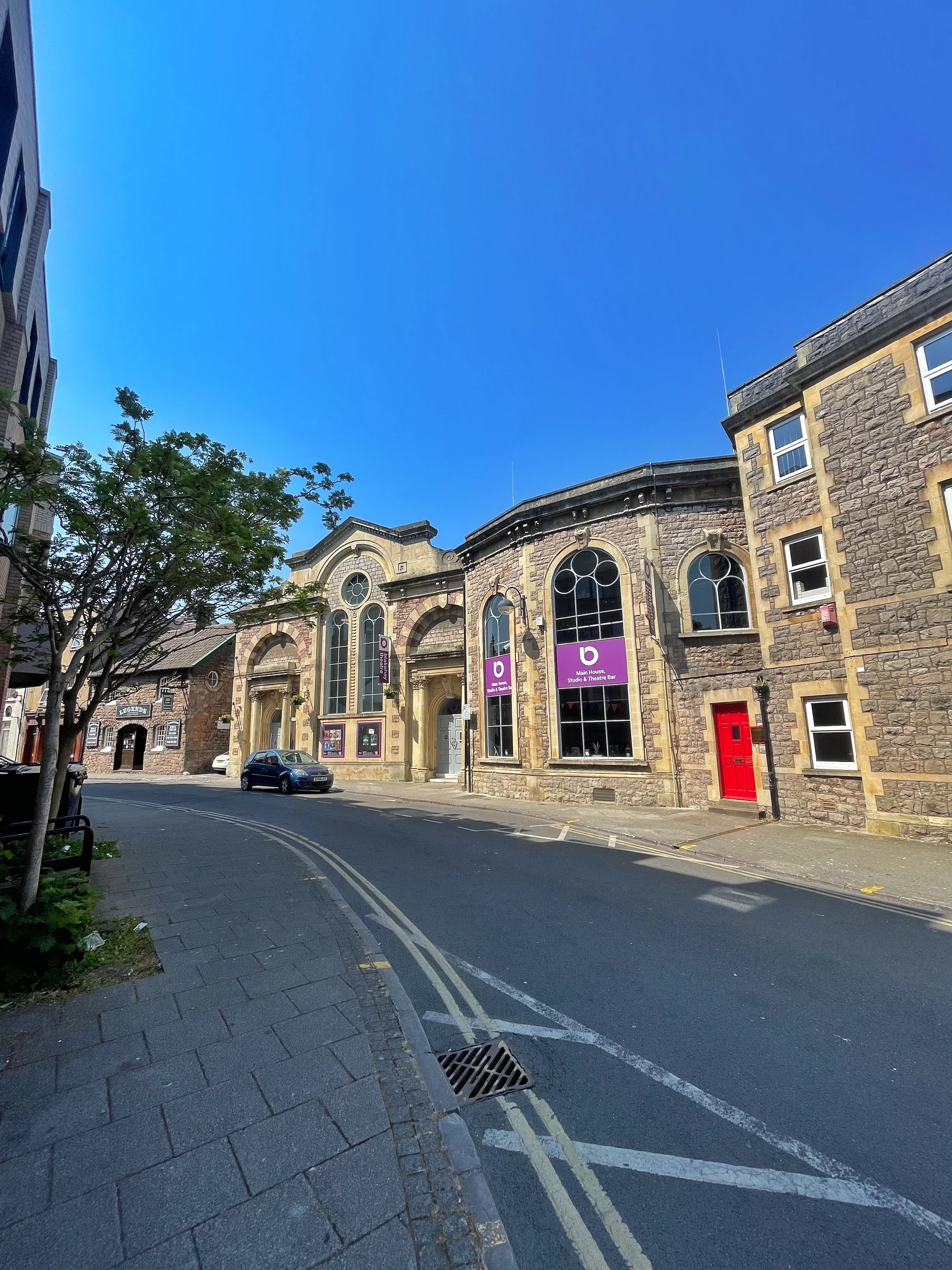
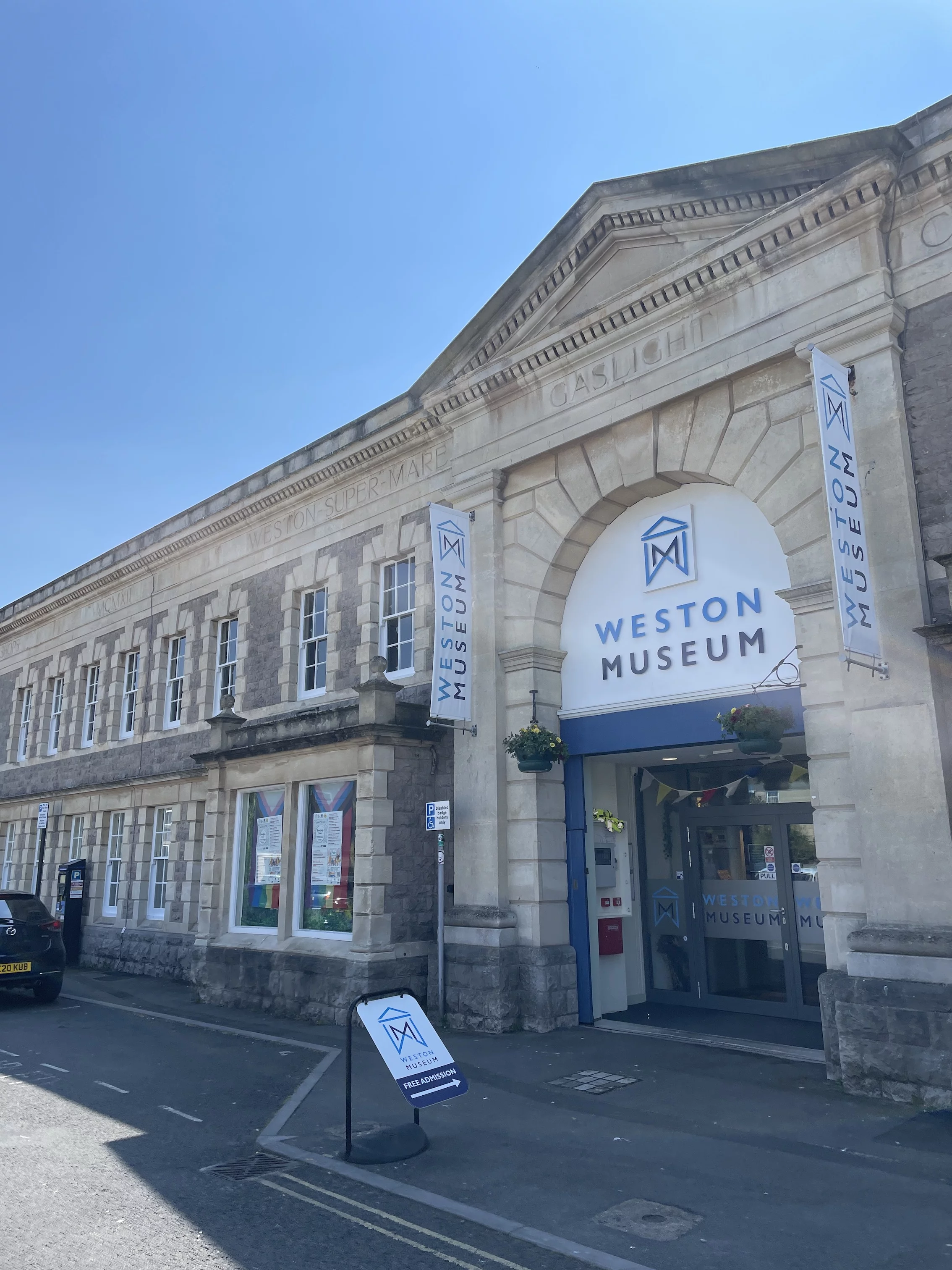
Dr Edward Long Fox (who also has a blue plaque) was instrumental in promoting Weston’s health and wellbeing offering. You’ve seen the art deco posters, where it says ‘with air as good as wine’! How was he influential and where is Weston now in terms of health and wellbeing?
He was a man ahead of his time, because he was very instrumental in setting up this complex on Knightstone, where people could come and recuperate, get over physical ailments, or mental health issues, which weren’t spoken about until fairly recent times.
Getting out into the fresh air, exercising – whether it’s walking about and enjoying the prom, or bathing, it’s all good for you. People could come, they could go to the reading rooms, and read the newspapers and relax. He was instrumental in getting the ball rolling with physical exercise, especially swimming.
Find out more about the different swimming groups and safe open water swimming in Weston here.
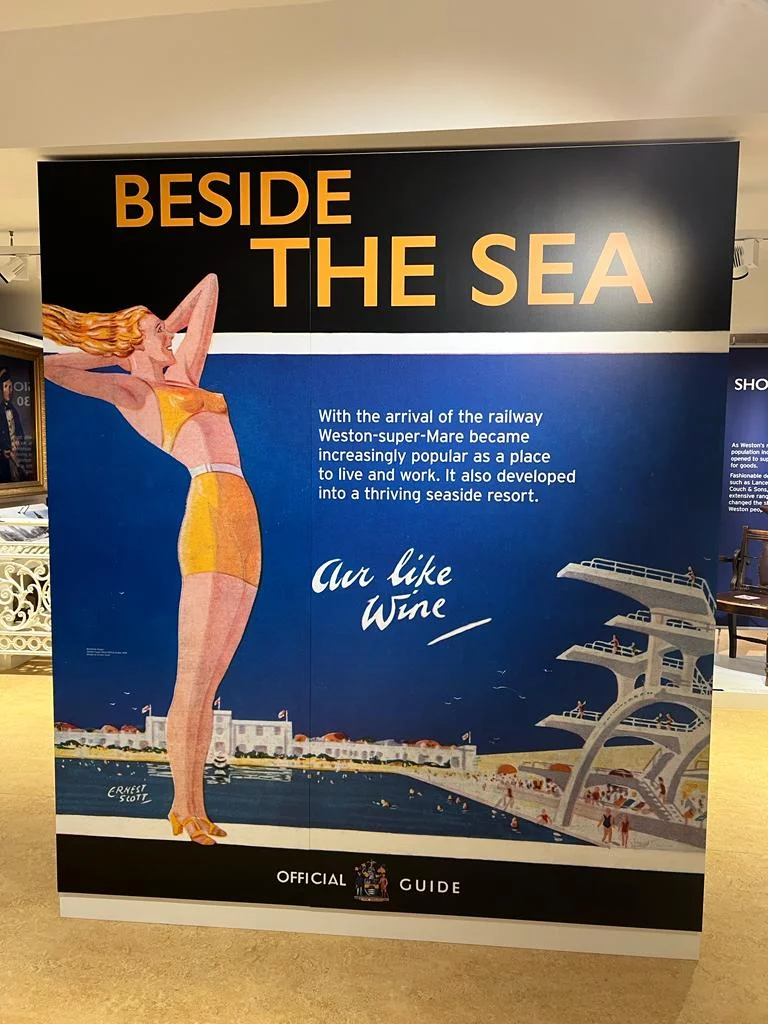
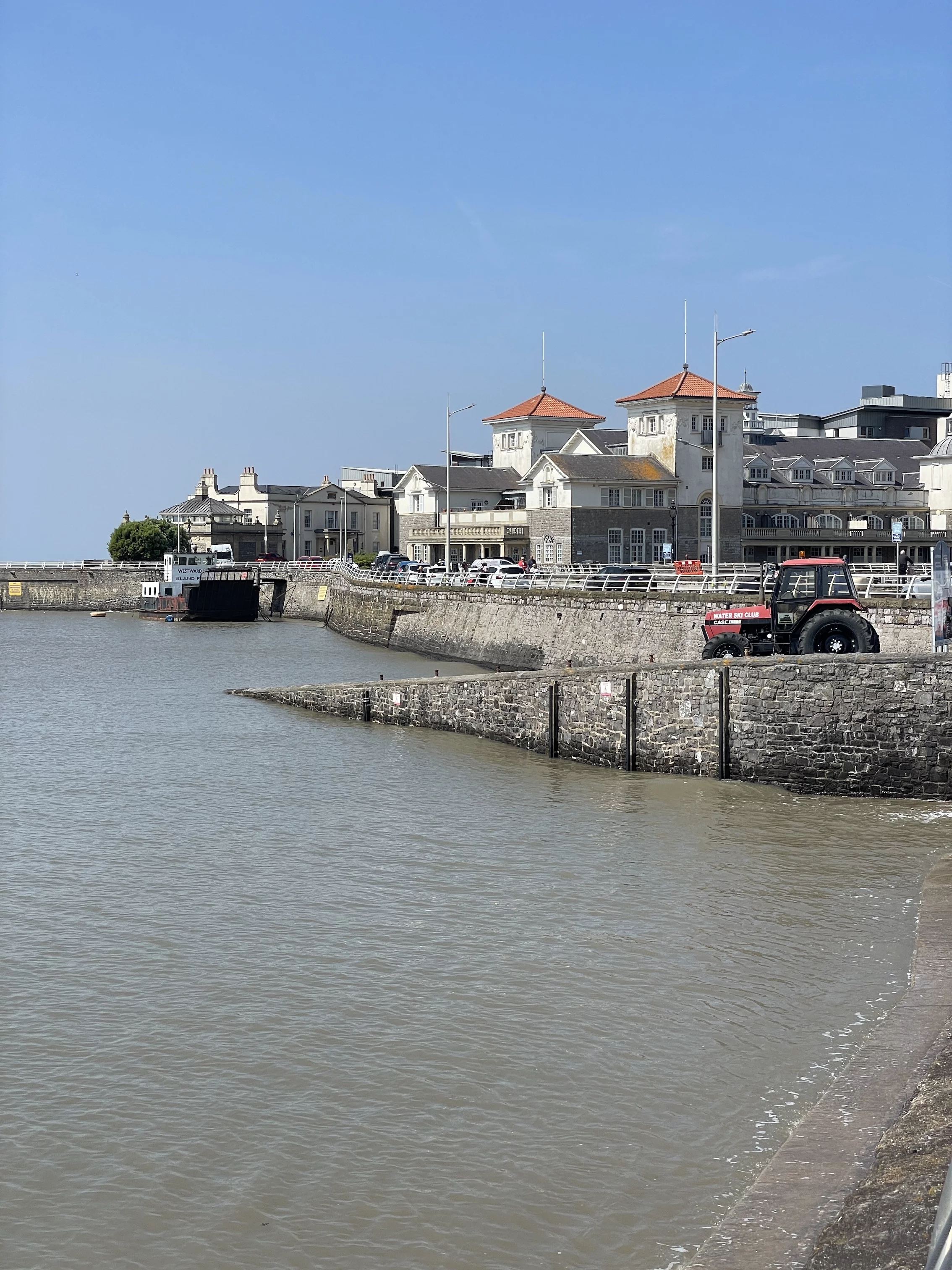
Weston has a theme of caring about people, how does that manifest today?
There are really strong communities and a lot of people who have been involved in mental health are working in Weston. A lot of the churches have sessions where people can get support but also, especially with austerity, the development of food banks and support for people in terms of healthy eating and mental wellbeing.
There is care for the town in terms of the investment that is being put into Weston – the work in the conservation area, the development of the public realm i.e. streets and green spaces. Alexander Parade is an example of that development over the last couple of years, it’s not just a roundabout for cars, the green area has been increased, as has the area where people can sit outside in the sun.
Add to that the development of vegetarian and vegan restaurants in Weston and working with people to really think about their health and wellbeing.
Jane, tell us about Know Your Place, that you and people in the community have been working on.
Know Your Place is a website and a digital mapping resource that covers the whole of the West of England. It originated in Bristol, with the county archaeologist getting the funding to set it up, and then it extended outwards to North East Somerset, Wiltshire, Dorset and South Gloucestershire etc.
If you go to the website, you will see a variety of different maps – from old tide maps, to pre- and post-enclosure maps, town plans, and old Ordnance Survey maps. There’s not always 100% coverage, it just depends on what has been available in the archives, because it was a digitisation project using old maps.
On the maps, you can drag and drop across the screen to contrast old with new, there are various coloured dots on there, which represent things like listed buildings, archaeological sites, conservation areas, registered parks and gardens. When you click on one of those, you can find out additional information about those places, but the most exciting thing on there is the community layer. The community layer has lots of green diamonds on it, and if you click on the green diamond, it will open up a photograph and some additional information about that place of interest.
Members of the community have uploaded their own photographs, and their own little bits of research, meaning it’s really inclusive, and it makes history accessible to everybody. If they’ve got something of interest, they can upload their own photograph and information. Before it goes live on the website, it is checked over by North Somerset Council’s Historic Environment Team to make sure that everything is accurate before they press live.
Weston Museum has been working with North Somerset Council, using some funding from the Heritage Lottery people to do an enhancement project with the website for North Somerset. Lots of volunteers were recruited and trained-up. A couple of exhibitions were held, where photographs of particular interest were printed off.
When people think about history, some assume it’s all very dry and dull and ‘learned’. But the wonderful thing about Know Your Place is that there’s all kinds of pop culture on there – things like Oasis’ album cover on the beach and The Beatles visit to Weston!
History is all about people, whether you’re delving back in time, or just looking back into the past 10 or 20 years, it is the people that make history. They don’t always have to be kings and queens and politicians. It really enriches what we know about the local area.
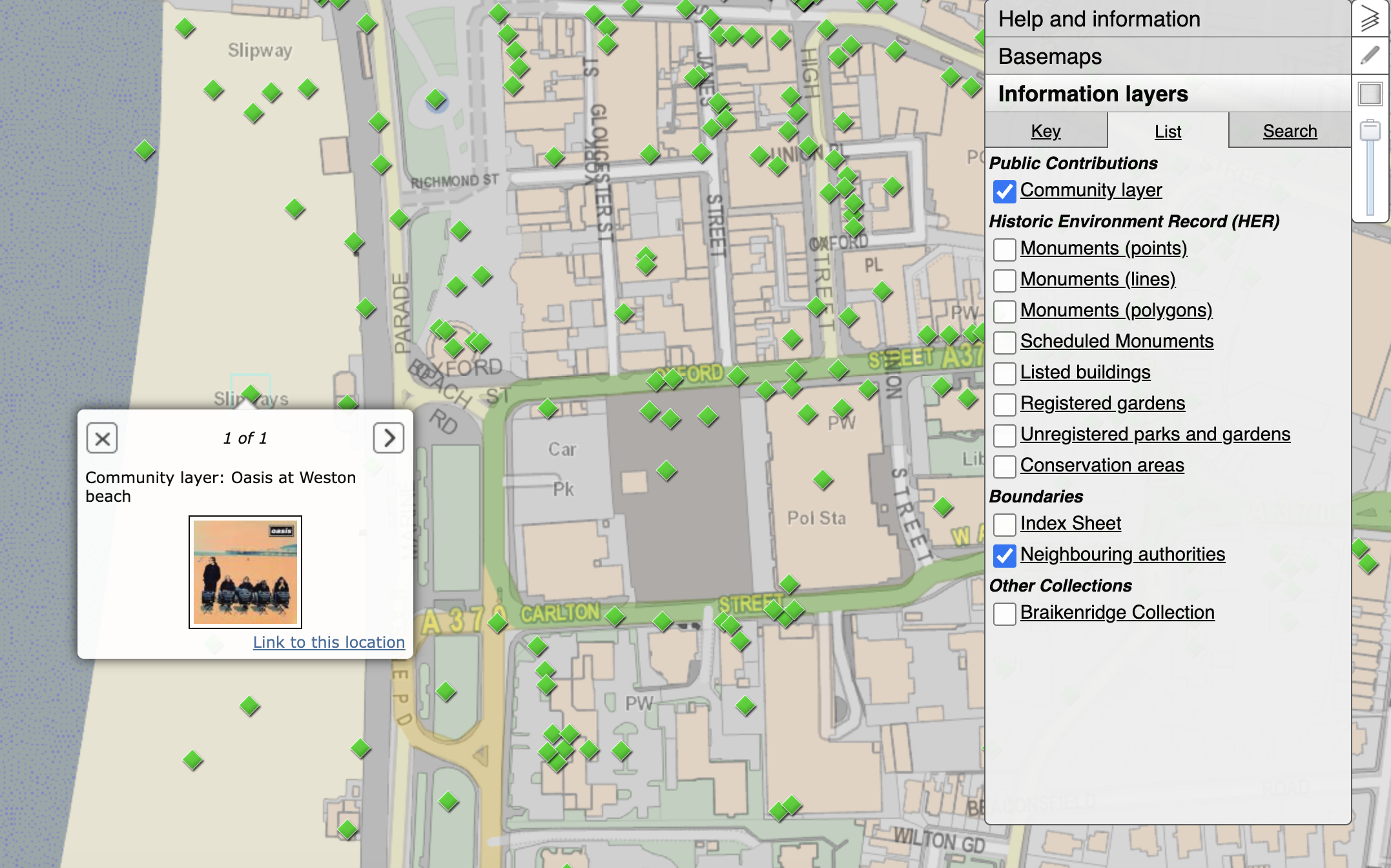
Talking of nosing around things, tell us about the national Heritage Days Festival.
The Heritage Open Days Festival runs from 8-17 September in Weston, and there’s a lot of places open that you wouldn’t normally get to see. You can go and see All Saints Church or St John the Baptist Church, hear about the history of The Old Thatched Cottage – Weston’s oldest building and now a restaurant, take tours around Weston (the Hans Price tour for example – see above) and the Weston Wallz street art trail which features 40 murals on walls around Weston.
Enjoy culture at Whirligig Festival (9-10 September), hear more about Birnbeck Pier with the Birnbeck Regeneration Trust, go to the library and learn more about the history of Weston, hear the stories people have of their journey coming out as gay or LGBTQ+ in Proud Bar, visit Woodspring Priory (an Augustinian house of the rare Victorine rule, surrounded by a working farm, close to the Severn Estuary), and more!
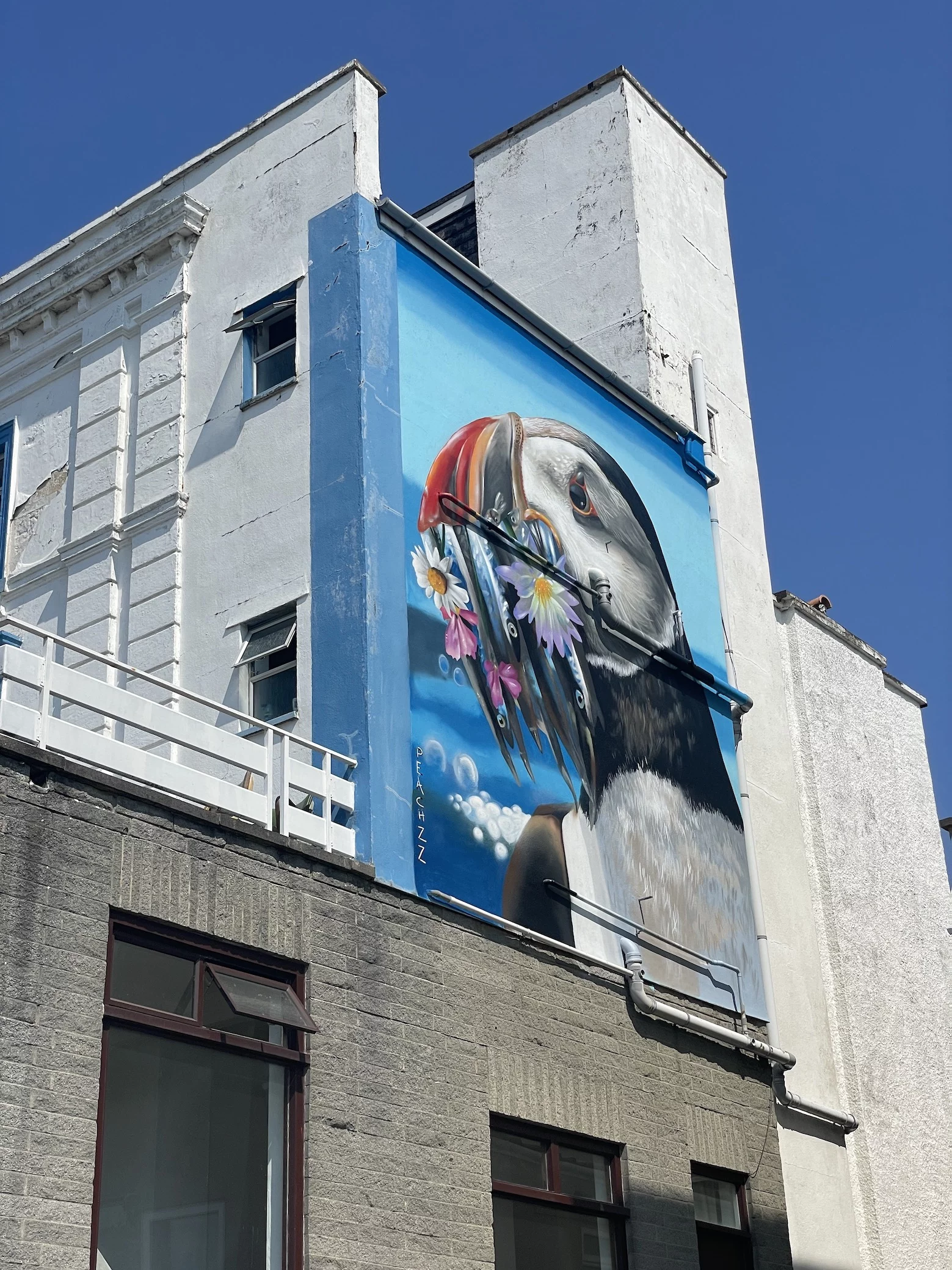
What are some of your favourite places to eat in Weston?
Jane Hill: I like going to Uphill, to The Boathouse because it’s very dog-friendly. Weston Museum’s Clara’s Cafe is also a lovely place to go for coffee, cake, sandwiches, jacket potatoes and a meal deal on a Wednesday.
Cara MacMahon: The Fork ‘n’ Ale pub, partly because the historical funding helped restore it and also because there’s really great food and drink. I love vegetarian food, so Loves is a great place not just for food, but for entertainment.
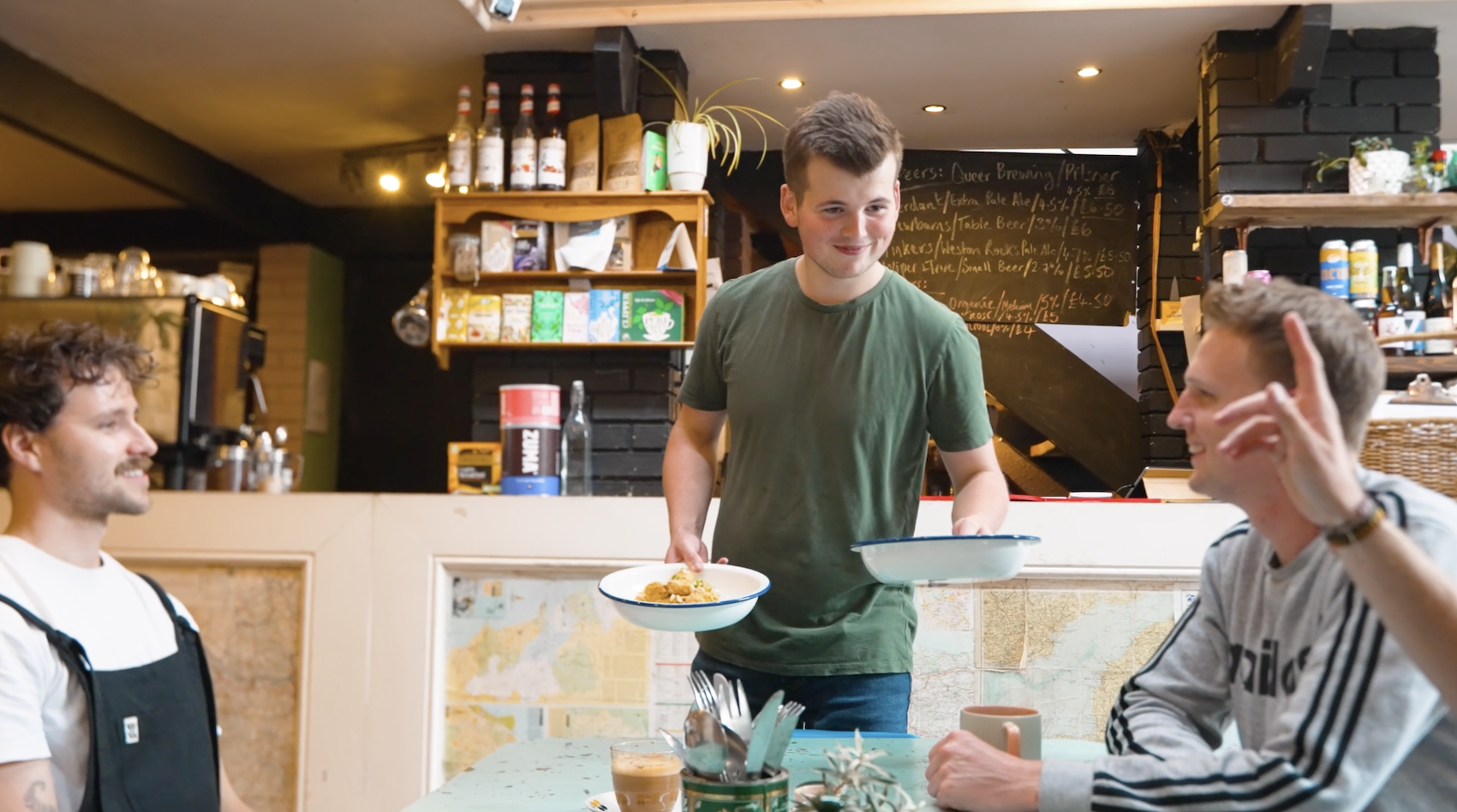
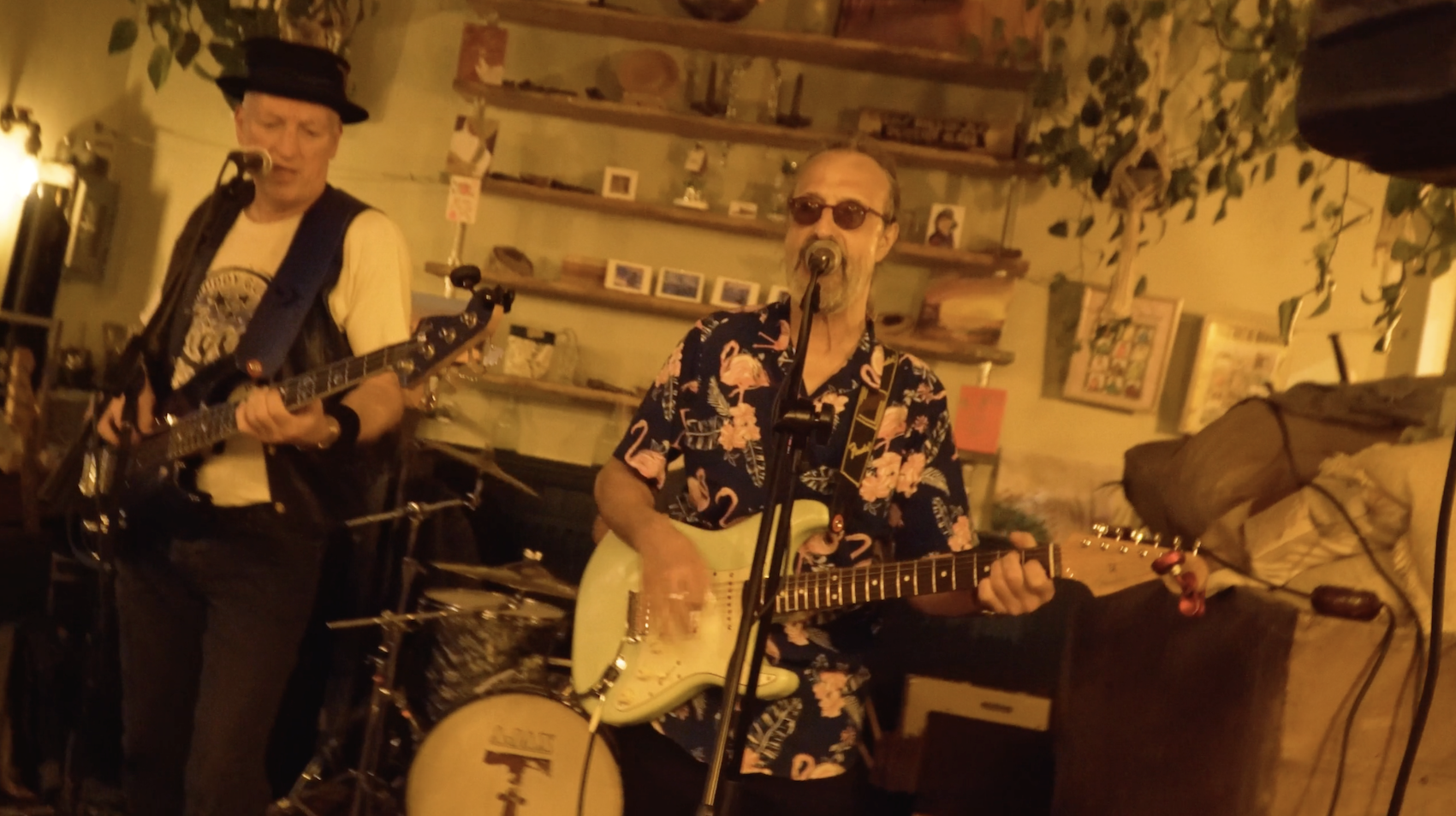
What is the most underrated thing about Weston that you wish people would just get?
We always hear people saying Weston looks rough, or isn’t nice, or it’s not pretty. I would suggest people look up at the buildings. If you look up to the first and second floors of buildings you can really appreciate the architecture.
Also the people – there are all kinds of characters in town. I love the fact that Weston is not that big. If you go into town and walk around, you always bump into somebody you know.
Look out for the new Doctor Who exhibition that’s starting at Weston Museum on 21 October until 27 January 2024 – the largest collection of original and digital art from and about the programme ever shown in one location.
More places to find out about Weston’s heritage:
Weston’s Heritage Open Days Festival Programme 2023
Heritage Open Days – national events listings and visitor information
Weston-super-Mare’s Heritage Action Zones
North Somerset Libraries – archives of books, maps, postcards
Weston-super-Mare Civic Society
Weston-super-Mare District Family History Society
More walking tours
Historic England Walking tour of Weston – featuring links to key buildings and their history within Weston
Weston-super-Mare Town Council’s Blue Plaque walk
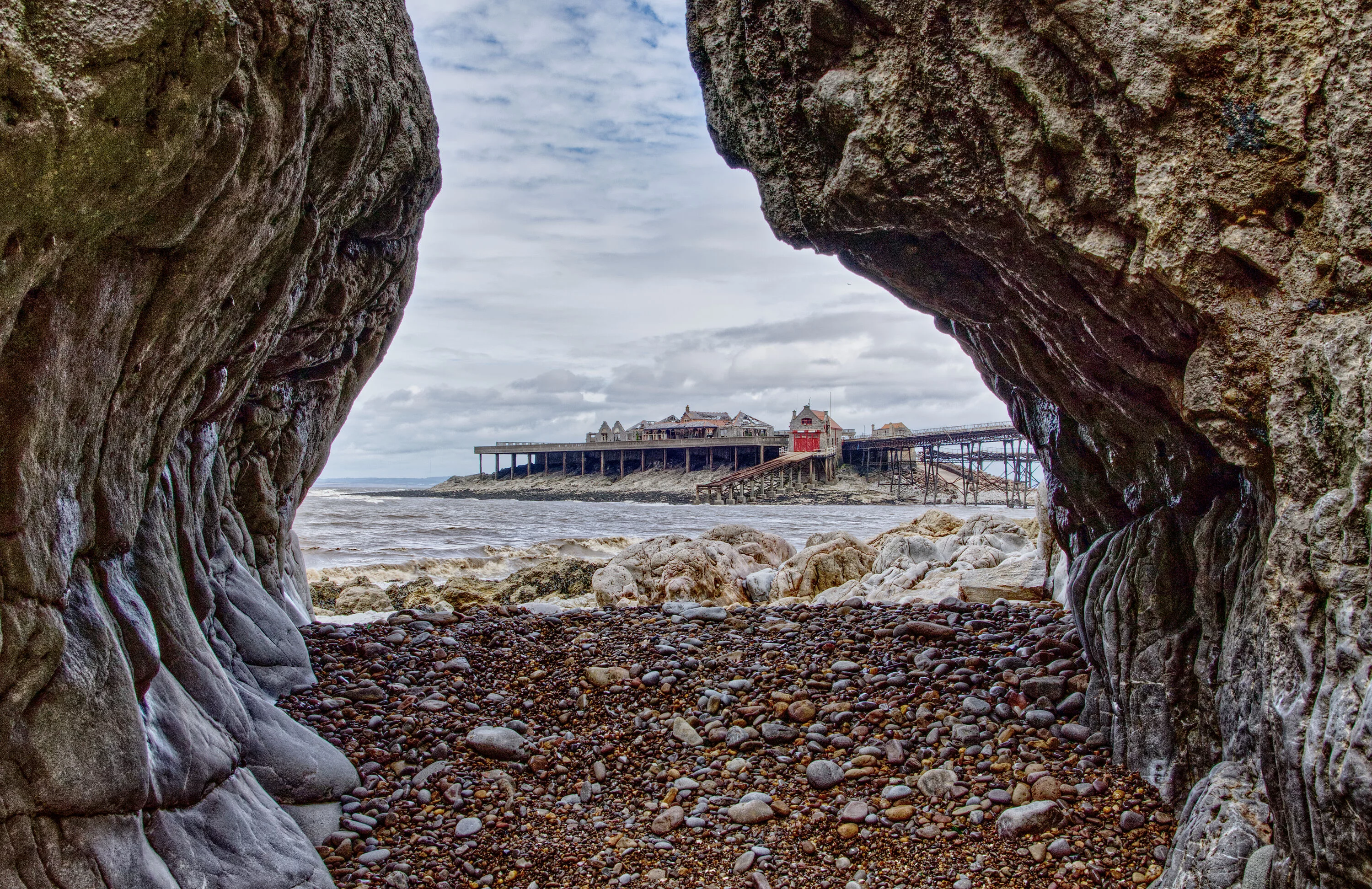
Important meeting to begin the development of Birnbeck Pier
The progression of the Birnbeck Pier restoration project in Weston-super-Mare will be a focal point at the upcoming North Somerset Council meeting on February 7 2024
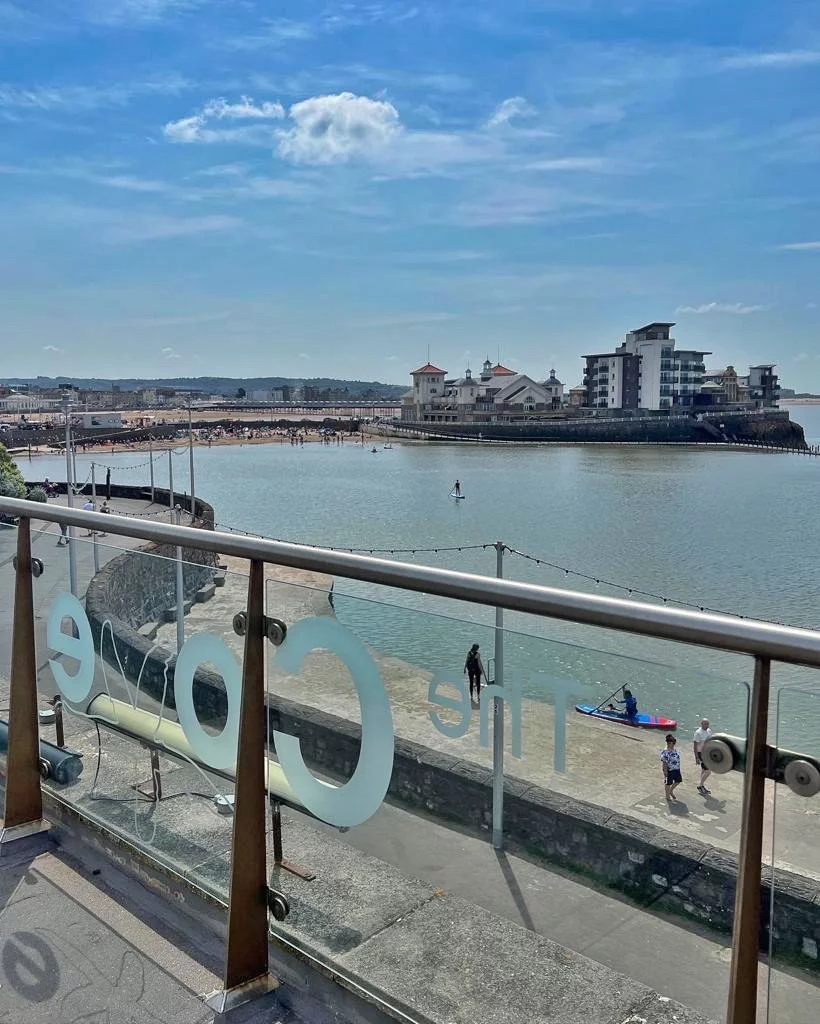
Marine Lake enhancement work begins
The upcoming enhancement phase at Weston-super-Mare's Marine Lake is set to commence this week 6th February 2024, marking a significant milestone in the rejuvenation efforts facilitated by North Somerset Council's successful bid for a £20 million investment from the UK government's Levelling Up Fund.
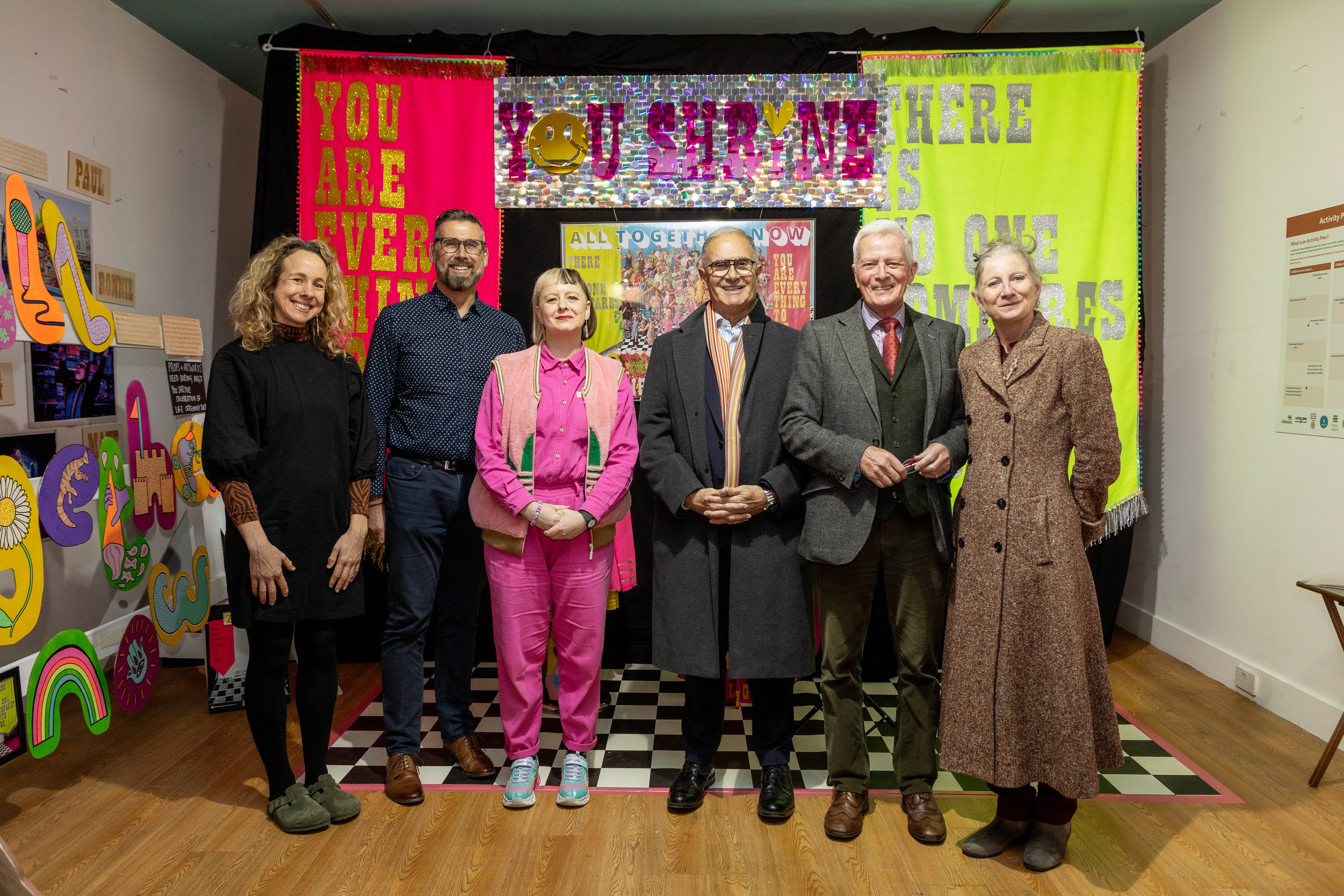
New Exhibition Celebrates Weston’s High Street Heritage Action Zone
Dive into Weston's history at 'All Together Now,' a free exhibition revealing the High Street Heritage Action Zone's £1.1m investment from Historic England.